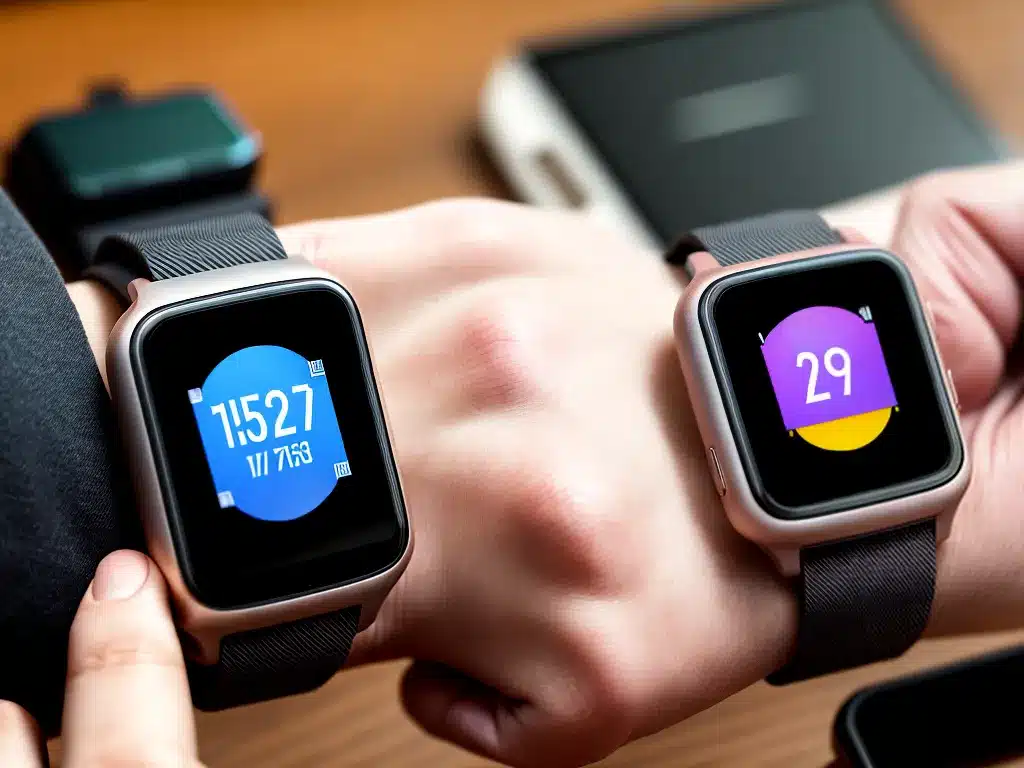
Developing a smartwatch operating system from the ground up is an ambitious undertaking that requires strong programming skills and a deep understanding of wearable device constraints. In this article, I will walk through the end-to-end process of building a custom smartwatch OS.
Selecting a Development Environment
The first step is choosing a development environment and programming language suited for resource-constrained wearable devices. Some top options include:
- C/C++ – Provides low-level control and efficiency. Commonly used for embedded systems programming.
- Rust – A systems programming language focused on speed, memory safety and concurrency. Well-suited for embedded devices.
- Android – Google’s mobile OS can be modified for smartwatches. Provides existing frameworks/APIs.
I will focus on C/C++ due to its maturity in embedded systems development. The small executable size and direct hardware access are critical for smartwatches.
For the toolchain, I will use GCC ARM compilers to target the ARM Cortex-M processor in my watch hardware.
Defining the Software Architecture
With the dev environment set up, I now need to map out the core software components and architecture of my OS:
- Kernel – Manages low-level hardware resources like CPU scheduling, memory allocation, device drivers.
- Middleware – Provides communication and services for higher-level components. Includes networking, data storage, cryptography libraries.
- Applications – The user-facing programs and UI elements like watch faces, notifications, settings.
The kernel and middleware will expose APIs that apps can leverage to access system resources. A simple architecture diagram may look like:
+-----------------------+
| Applications |
+-----------------------+
| Middleware |
+-----------------------+
| Kernel |
+-----------------------+
| Hardware |
+-----------------------+
Segregating components like this promotes modularity and code reuse.
Implementing the Kernel
With the architecture defined, I can start implementing the low-level kernel. Key tasks involve:
- Setting up core scheduler, memory manager and I/O mechanisms.
- Writing device drivers for hardware like display, sensors, Bluetooth module.
- Exposing kernel APIs for higher layers to use.
For the scheduler, I will use a preemptive priority-based algorithm to properly share the CPU between threads. This provides responsiveness for real-time tasks.
The memory manager will use fixed buffer pools due to the smartwatch’s limited RAM. This prevents fragmentation and unused allocations.
For I/O, the kernel will provide file system support for onboard flash storage and a USB stack for communication.
Building the Middleware Layer
On top of the kernel, I need to implement middleware libraries that enable network connectivity, persistent storage, cryptography and more.
For example, the connectivity manager will handle discovering, pairing and interacting with other Bluetooth devices. This makes it easy for apps to get sensor data from wearables or stream music from phones.
A database engine provides structured storage directly on the watch. This can be a simple key-value store optimized for flash memory. Fitness apps may leverage this to keep workout logs locally.
Encryption libraries add an important security dimension for smartwatches. Data should be encrypted when at rest and communications secured with TLS.
By abstracting these complexities into middleware, app developers can focus on high-level watch features vs low-level plumbing.
Building the UI and Applications
With the kernel and middleware established, I can finally start building the user-facing components:
- The home screen shows glanceable info like date, steps, notifications.
- The app launcher allows scrolling through and opening apps.
- Settings enable customizing watch faces, connectivity, brightness.
- Notifications display incoming calls, texts, emails etc.
- Media controls for music playback.
I will optimize the UI for quick interactions on a tiny screen. The home screen will prominently display the time and key metrics. Icons and text will be sized appropriately.
For high usability, I will support voice commands and gestures like flicking the wrist to scroll. This improves navigation when hands are occupied.
By focusing on simplicity andglanceability, I can craft a smartwatch interface that users can grasp intuitively.
Testing and Validation
Throughout development, I need to continually test and validate my OS on actual smartwatch hardware. Key steps include:
- Unit testing individual modules in isolation.
- Performing system tests to catch integration bugs.
- Benchmarking for performance, memory usage, battery life.
- Beta testing real-world usability with a small group.
I will identify and fix issues early to avoid major rework down the line. Rigorous testing is essential for building a production-grade smartwatch OS.
Next Steps
Once the initial version is complete, there are many potential improvements like:
- Adding cellular connectivity for making calls and using data on the go.
- Incorporating a voice assistant for hands-free help.
- Allowing third-party apps to expand functionality.
- Updating to a newer Bluetooth protocol for faster data.
By iterating on features and responding to user feedback, I can evolve the smartwatch OS into a mature, robust platform.
Building an OS from scratch is ambitious, but methodically tackling each layer ultimately allows me to craft a custom smartwatch experience tailored to my vision. With diligent development and testing, I can bring my smartwatch OS dreams to reality.












